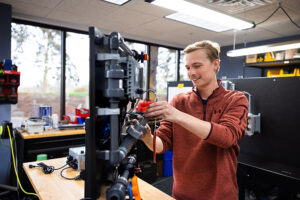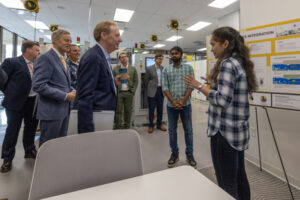Every summer, the campus population dwindles, as most undergrads take a break from classes. But that doesn’t mean the campus is empty.
Between 150 and 200 UWM undergraduates spent the summer of 2015 fitting research into their college experience, according to the UWM Office of Undergraduate Research (OUR).
Here are the stories of five such undergrads who hail from various disciplines and programs. They share how and why they got involved with different research projects, and why you should consider it, too. Consensus: It’s seriously worth it.
Should you take their advice, act fast. Application deadlines for summer programs are approaching, as detailed in the accompanying information box.
Face your fears
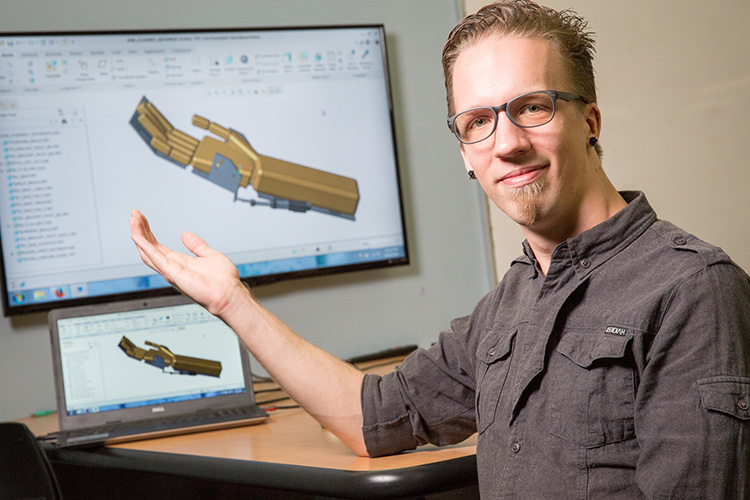
Christopher Spiewak (engineering) credits his undergraduate research experience with helping him overcome his math-phobia – so much so that he’s now pursuing a graduate degree in engineering.
Spiewak’s serendipitous introduction to undergraduate research came when another student handed him a brochure for the federally funded Ronald McNair Post-baccalaureate Achievement Program.
Spiewak, a first-generation college student, signed up and was paired with Assistant Professor Mohammad Rahman to design a robotic assistive device, something similar to a hand prosthesis.
The project focuses on coordinating the four robotic fingers with their thumb, because that’s the main movement in grasping. “If you had lost a hand, this would remind you of how your fingers used to move,” Spiewak said.
“Was I intimidated? Yes, very much so.”
But Rahman asked one of his doctoral students to tutor Spiewak in the necessary math. In only one summer, Spiewak said, “I got just beyond the basics in this kind of robotics. But I’m hooked. I really want to pursue this subject.”
Getting a head start
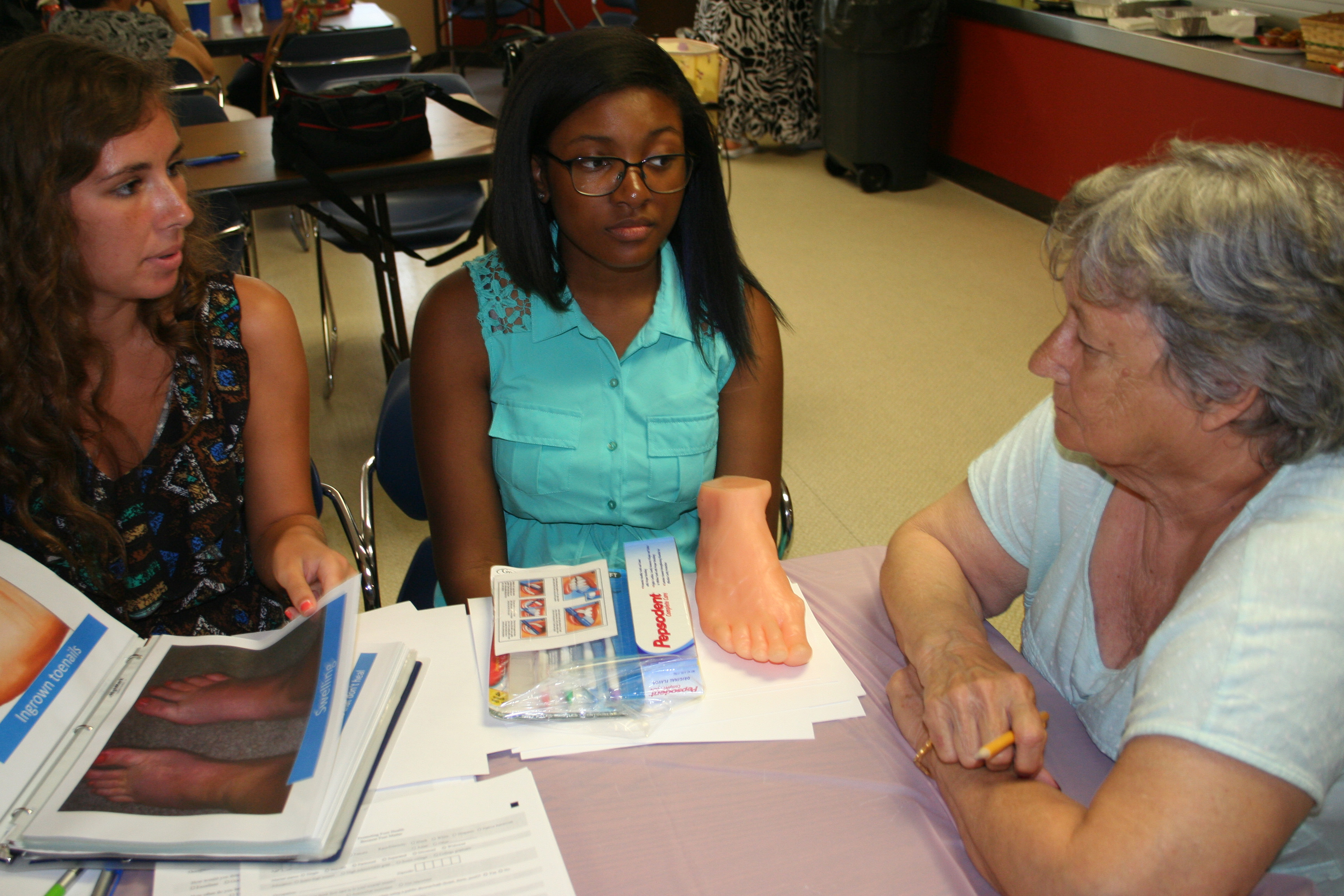
“How often would you say you inspect your feet?” Erin Green (nursing) asked. “My feet?” replied a senior resident at the Lakeside Apartments in Kenosha.
Throughout the summer, Green and other nursing students in the UR@UWM program traveled southeastern Wisconsin to talk with people about health maintenance – and to collect data. The students went wherever people gathered – apartment communities, churches and malls.
So why ask people about their feet? Because, said Professor Sandra Millon-Underwood, your feet hold clues about undetected health issues, such as diabetes and heart disease.
In essence, Green started training to become a nurse before stepping foot in her first class. Through UR@UWM, she lived on campus over the summer and worked with a faculty member before the fall semester began.
“I’m 100 percent decided on nursing,” she said, but she has yet to settle on a specialty. “This way, I can start experiencing it.”
Million-Underwood said that most students who participate in the summer program will continue in undergrad research during their first year.
For Green, learning the campus before the crowds arrive for fall semester helped put her at ease. “Just to know that little part, gives me confidence,” she said. “It makes me feel like I’ve got the upper hand.”
The art of confidence
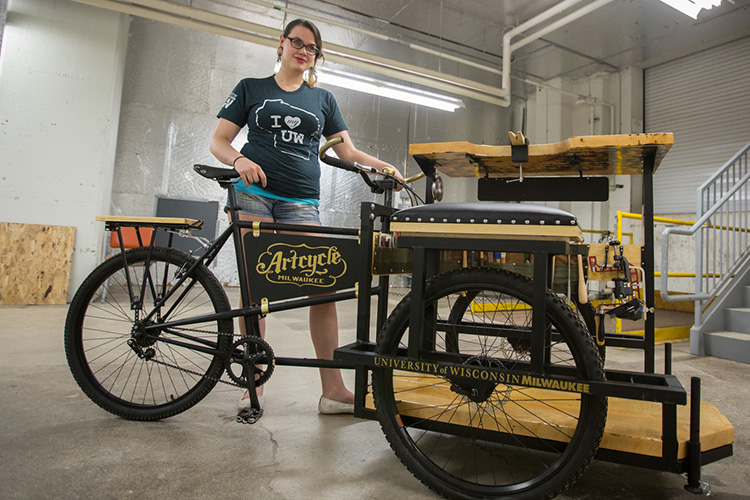
Michael Bernard had the idea, but he needed Rachel Davis (art and design) to help make it a reality. The result: ArtCart, a mobile art studio.
Davis had already been working with Bernard, a lecturer in metalsmithing, on projects for academic credit. But her new challenge was to modify a bicycle so it had a jeweler’s bench attached to it. This would allow artists to ride to a location, interact with the public, and invite them to participate in a make-and-take piece of art.
It took Davis three semesters of part-time work to finish the ArtCart, and she was paid for her efforts through the OUR.
“I had never even heard of undergraduate research then,” Davis said. “I thought, ‘Research? That’s insane. I’m an artist.’” The Grafton native was even more astonished when the spring 2015 undergraduate research symposium, which included undergraduate researchers from all UW colleges except Madison, awarded the ArtCart its top prize.
Davis is now working on a master’s degree at Kent State University, a path she traces back to her research project. “I never would have had the confidence to apply to graduate school without this experience,” she said.
Digging into lab work
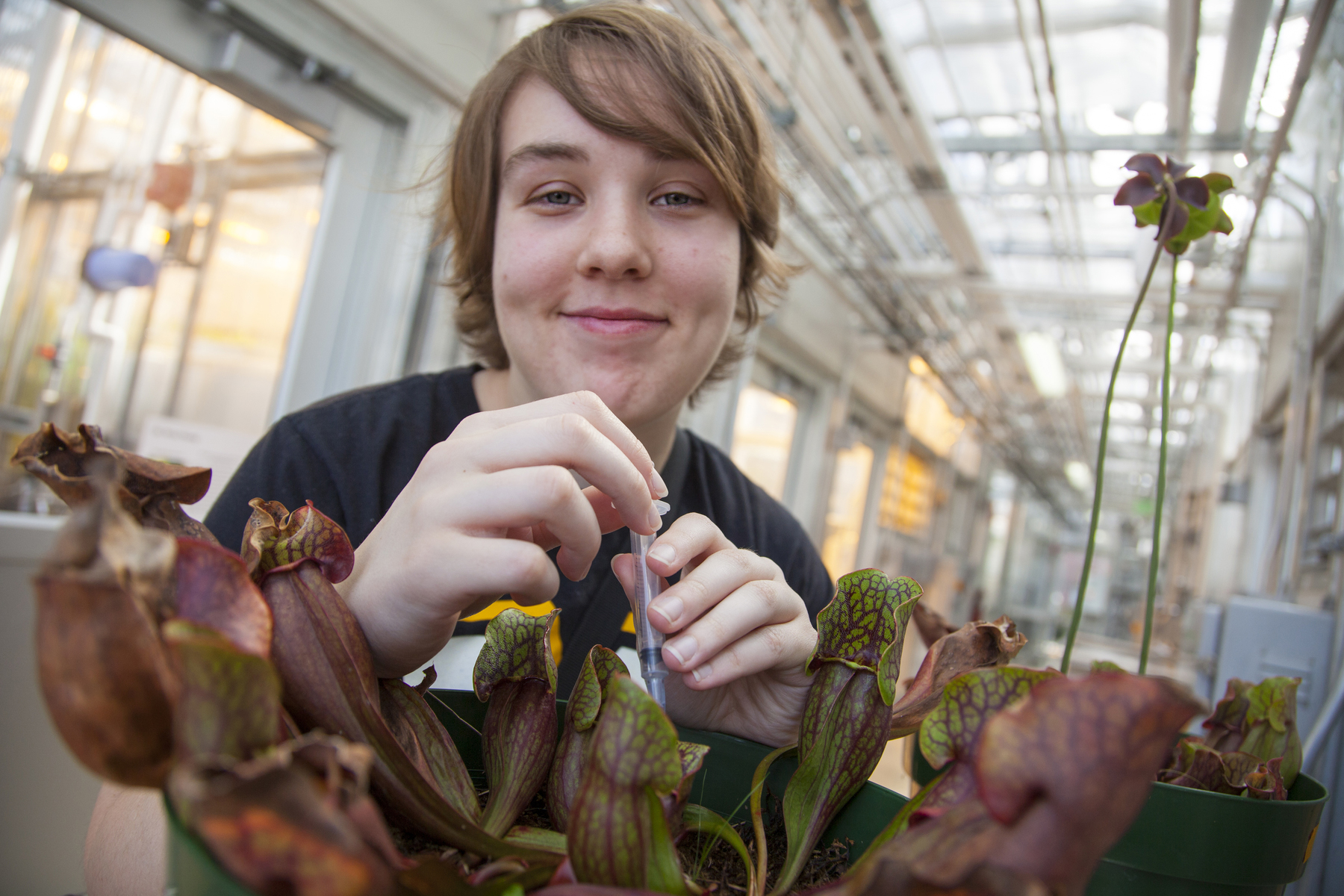
When a pitcher plant traps an insect inside its deep cavity, a host of microbes, enzymes and even fungi begin breaking down the meal. Associate Professor Erica Young wanted to know what microbes were involved and how they worked together to get the job done.
So Young enlisted the help of Jessica Mulligan (biological sciences) to collect samples of the liquid at the bottom of the plants’ tubelike structures.
Mulligan spent part of summer 2015 at the UWM Field Station in the Cedarburg Bog, digging up pitcher plants and bringing them into the controlled environment of the department’s greenhouse. Young will sequence the DNA of everything contained in Mulligan’s samples, then use a process of elimination to sort out what’s what in the gut of the plant.
“There’s a lot going on there,” Mulligan said. “It’s more complicated to sort it out than you realize.”
She had worked in a different professor’s lab the previous year, and the combined experiences shaped her future goals. “I learned that I like lab work, and that it is something I would like to continue doing,” she said. “I hope this will help me get into a good graduate program.”
“I never thought I’d do that”
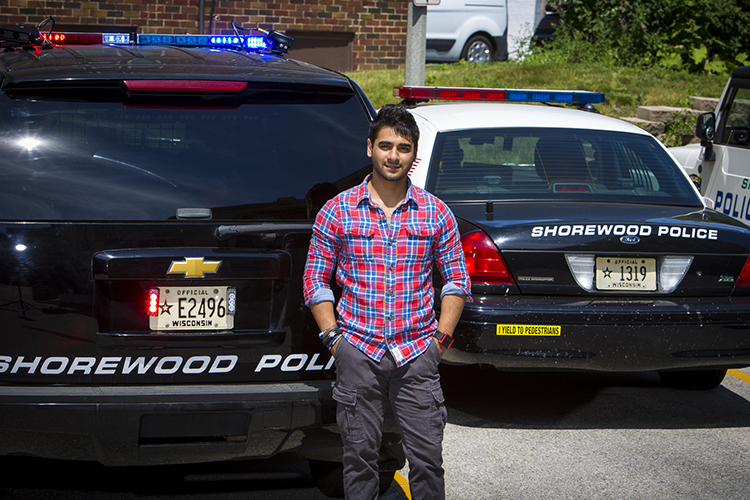
Parminderjit “Sunny” Singh (criminal justice) learned about undergraduate research opportunities while working as a peer mentor, but he found no opportunities in his major. So the OUR staff went looking for one.
That’s how Singh met Associate Professor Tina Freiburger and embarked on research that would introduce him to crime analysis. His mission: gather information showing a correlation between domestic violence sentencing and a reduction in repeat offenses. He was collecting data using the same statistical analysis software that crime labs use.
“We are looking for what punishment has an effect on recidivism in Milwaukee County,” Singh said. “There are many dynamics that fit into that picture – gender, age, environment, lifestyle.”
His research exposed him to the value of crime-fighting tools, such as background checks.
“It really helped me open my eyes to the kinds of things you can do in the field,” Singh said. “I am working with a Ph.D. student, and it gave me a motivation to go further and get certified in Crime Analysis Specialization.” He also plans to apply to graduate school. “I never thought I’d do that.”




